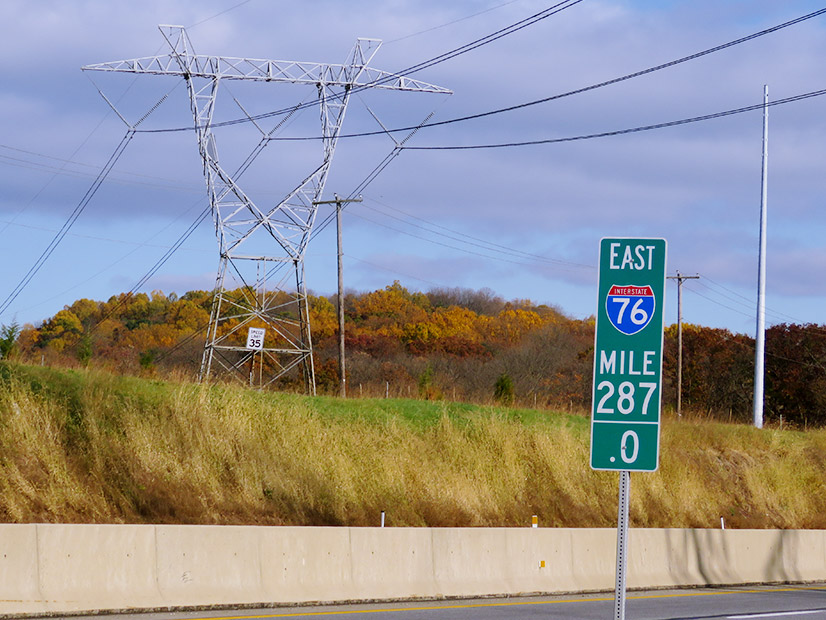The D.C. Circuit Court of Appeals on Friday denied Linden VFT’s and the Long Island Power Authority’s (LIPA) petitions for review of a settlement that allocated transmission costs in PJM.
But the court did agree with Linden’s argument that FERC “erroneously” assigned costs based on a “flawed interpretation” of the settlement, remanding the commission’s decision for further proceedings.
The dispute was over a settlement the commission approved between PJM and members in May 2018 regarding how the RTO would allocate the costs of transmission projects above 500 kV approved between April 19, 2007 — when FERC determined the RTO’s existing violation-based distribution factor (DFAX) or “postage stamp” method was unjust and unreasonable, requiring a new load-ratio share method — and Feb. 1, 2013, when FERC approved PJM’s new hybrid method, combining both the DFAX and load-ratio methods. (See FERC Rebuffs Challenges to PJM Tx Cost Allocation.)
FERC approved the settlement over the objection of Linden and LIPA, both of which export electricity from PJM to New York; they argued they would pay about $30 million more for the “vintage projects” approved between 2007 and 2013 than under a pure DFAX method.
After the commission denied rehearing of the settlement orders, Linden and LIPA petitioned for judicial review.
“The question is difficult because high-voltage projects afford two different kinds of benefits — local benefits that accrue primarily to utilities close to the project at issue, and regional benefits that accrue throughout the grid,” the court said in its ruling. “The 7th Circuit has twice set aside cost allocations that ignored the local benefits, and we have set aside cost allocations that ignored the regional benefits.”
Arguments
Linden and LIPA contended that FERC’s approval of the settlement, and the allocations it implemented, were arbitrary, but the court disagreed, saying that the commission can approve an agreement when the “overall result of the settlement is just and reasonable,” even if “individual aspects” of it “may be problematic.”
“FERC adequately justified its approval of each formula,” the court said. “Start with the going-forward formula, which allocates costs through a mix of the postage-stamp and flow-based methods. FERC approved the formula based on reasoning in its 2013 compliance order, which had approved the same formula for future high-voltage transmission projects. Doing so was not arbitrary.”
Linden and LIPA also contended that the settlement violated a requirement of a cost-benefit analysis to quantify the benefits of a project, citing the 7th Circuit Court of Appeals’ rejection of the postage-stamp methodology in 2014. But the D.C. Circuit said that ruling was narrow, in that it found FERC weighed regional benefits over local benefits. “‘Nothing in those decisions casts doubt on’ FERC’s view that high-voltage projects have substantial regionwide benefits,” it said, quoting itself from a previous ruling.
The court also said FERC “reasonably concluded” in its orders that Linden or LIPA would not have found a more favorable decision on the settlements by going through litigation in the courts.
“The challengers do their best to obscure this point, but what they seek is application of a pure postage-stamp method — or at least a hybrid formula with a more heavily weighted postage-stamp component,” the court said. “The 7th Circuit has twice set aside a pure postage-stamp formula for the vintage projects. We have little doubt that, if faced once again with a pure or almost pure postage-stamp formula, it would call strike three.”
TEC Adjustments
The 2018 settlement made a series of adjustments for the “vintage project” costs incurred before 2016, which PJM previously had allocated under the DFAX method. FERC said the adjustments were made to bring the allocations in line with “what would have been credited or paid” if PJM had adopted the going-forward formula from the start.
The formula imposed monthly transmission enhancement charge (TEC) adjustments beginning in January 2016 and continuing through December 2025.
Linden argued that it did not need to make any of the payments created in the formula because it surrendered its firm transmission withdrawal rights on Jan. 1, 2018, about five months before FERC approved the settlement. PJM agreed that Linden did not need to pay TEC adjustments for 2018 to 2025, but they disagreed over TEC adjustments for 2016 and 2017.
Regarding TEC adjustments, the PJM tariff states, “If all responsible customers in a zone or merchant transmission facility are no longer subject to transmission enhancement charges under the PJM tariff during the period in which transmission enhancement charge adjustments are collected, then, during the portion of that period that such responsible customers are not subject to transmission enhancement charges, the payments from or credits to such responsible customers shall cease.”
Linden is the only responsible customer in its merchant facility, and it argued that the “period in which [TEC] adjustments are collected” began when FERC approved the settlement, because PJM “did not and could not collect any payments before then.”
FERC said that TEC adjustments began to accrue and were “collected” as soon as the settlement became effective in January 2016.
“The plain meaning of ‘collected’ unambiguously supports Linden,” the court ruled. “FERC has not identified a single example, in a dictionary or otherwise, where ‘collect’ means to accrue liability. Nor have we found any. This strongly suggests that ‘collect’ simply cannot bear that meaning.”
